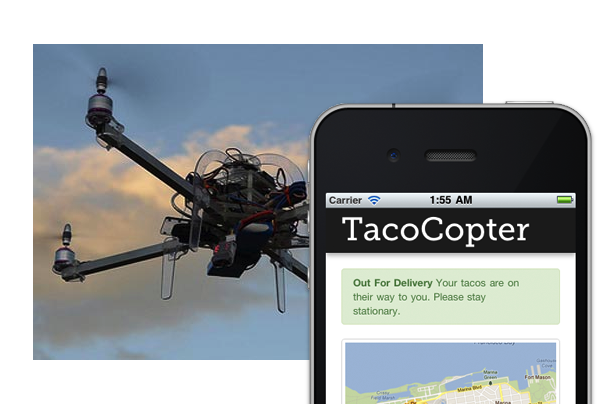Today's flying cars use the metaphor of a plane. Haven't they missed something? |
Today's flying cars look like this...
...but shouldn't they function more like this?

Today's flying cars use the metaphor of an airplane and often look similar to the Terrafugia just launched to market at Automotto on April 7, 2012.
But it is unclear how widespread this type of car will become. Most consumer's commutes are less than 30 minutes. Many would love to escape the traffic - yet few have the time or inclination to acquire pilot's licenses.
Could we be using the wrong metaphor? Isn't the average consumer looking for something that won't require a new driver's license. Something that virtually pilots itself? Something like the fabled flying carpet.
Technology indistinguishable from Magic
Already we are seeing quadrocopters with control and stability systems sophisticated enough to play catch with humans (or each other) that are automated.
Today's flying cars have two engines - either of which if failed - could result in a crash. One interesting feature of quadrocopter design is that if one of the four quadrocopters failed - the other three can still land properly. But why stop with just four engines? Quadrocopters have been coordinated effectively to fly in coordinated swarms of twenty - successfully navigating obstacles and between each other in ways that exceed human ability without training.
What if this approach of multiple engines for redundancy were extended to increase safety and stability through an entire "carpet" of quadrocopters so that multiple blades could fail and the system could still land safely.
What is the flying car for the masses? Perhaps it will look more like something like this.
Of course, taken to it's logical extreme of miniaturization, one could imagine nanofabric propellers. Applying an electrical charge to the fabric could power millions or trillions of tiny rotors. Woven into clothes - they would be self-air conditioning. Stretched into a sheet - the fabric could generate loft. But how much loft is possible - and how close are we today?
What about safety in cases of catastrophic failure?
Consider wearable airbags: Airfall Airbags.
Consider wearable airbags: Airfall Airbags.
http://www.youtube.com/watch?v=CIT07OSqLcE
How might such a system help traffic? Consider that if we just used the air space fifty feet up in a planar fashion, the traffic could split between the ground and the sky and traffic would be half. Use the layer 25 feet above that and the traffic is now 1/3rd as dense. Truly, the sky is the limit.
How far are we away from this flying car vision?
October 21st, 2011 was the date of the first manned flight of a "multicopter" by eVolo. It required just 16 blades and flew for 1 minute and 30 seconds.
You can watch it here: http://www.youtube.com/watch?v=L75ESD9PBOw
So how close are our flying cars?
E-volo, the German team that flew the manned, electric, 16-rotor multicopter in October, will launch a two-seater version this spring — and a commercial model will go on sale in 2013. The test flight only lasted 90 seconds, but according to E-volo the multicopter is capable of flying for 20 to 30 minutes on a single charge.
How could this change healthcare?
Multi-trauma patient transport might never be the same. Multicopters could be carried with ambulances or reach scenes helicopters cannot. Ambulances could stabilize patients in the field, place them on stretchers mounted on multicopters. Patients could be lifted from the scene and taken to the nearest hospital - avoiding roads - and taking the most direct route. One can imagine seeing patient after patient being lifted from the scene simultaneously - while other multicopters return for additional people. A two man version could enable a single paramedic to care for the patient while in transit.
How long until the first patient arrives by multicopter?
Of course, it is not just those interested in healthcare that autonomous deliver has excited. Some are anticipating a "revolution" in food delivery as well.












Travel does what good novelists also do to the life of everyday, placing it like a picture in a frame or a gem in its setting, so that the intrinsic qualities are made more clear. Travel does this with the very stuff that everyday life is made of, giving to it the sharp contour and meaning of art.
ReplyDeleteThus, in this article we provide you with some pointers, which can help you to take this important decision and zero down on a good employment option.
ReplyDeleteSmart Medigap Plans
Medical research has come a long way, and as a result, people live much longer than they used to. MyHealth Mississauga
ReplyDeleteI can see that you are an expert at your field! I am launching a website soon, and your information will be very useful for me.. Thanks for all your help and wishing you all the success in your business. Healthcare Marketing
ReplyDeleteNice blog and absolutely outstanding. You can do something much better but i still say this perfect.Keep trying for the best. scoopposts
ReplyDeleteI have seen some posts on this website and I think that your blog is very interesting and has lots of excellent information. we provide mortgage loan comparison singapore online. to know more visit our website.
ReplyDeleteThanks for postiing this
ReplyDelete